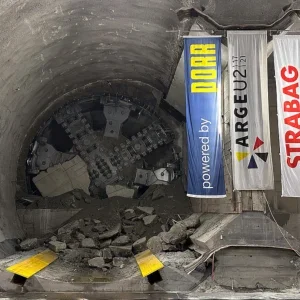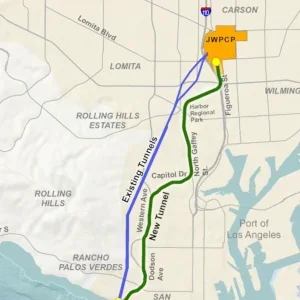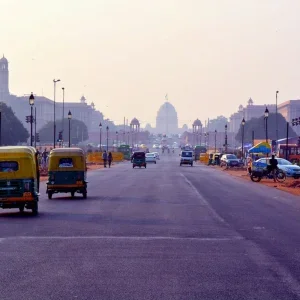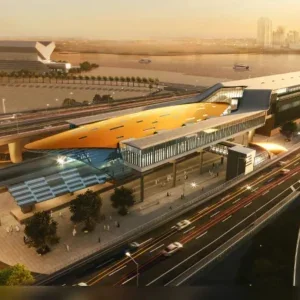The Metropolitan Water District (MWD) of Southern California’s Inland Feeder Project celebrated the break-through of the Riverside Badlands Tunnel on July 27, 2001 near Redlands, California. Crews for Shank/Balfour Beatty, MWD’s tunnel contractor, completed the 13.7km long tunnel in 19 months, averaging approximately 32.5m a day since December 1999.
Approximately six months of that was attributable to downtime and grouting activities during the tunnel drive. The Shank-designed 4.8m diameter TBM used 8in. (203mm) thick concrete segments as the initial lining. The tunnel is now being cleaned and utilities removed in preparation for the installation of 19.7m lengths of 3.9m diameter, welded-steel pipe liner. Liner installation and grouting is expected to take eight months.
"This was a very long tunnel in which we encountered various ground conditions from running sands to very hard metamorphic gneiss," said Dan McMaster, resident engineer with Hatch Mott MacDonald, the construction management consultant on site. "At times we used a combination of surface dewatering, drain holes installed from the tunnel heading and chemical grouting to lower the water table and stabilise the ground out in front of the TBM and reduce the risk of running ground," McMaster said.
The tunnel is a significant step in completing the $1.2bn, 70km Inland Feeder project, which will use gravity to deliver water imported from Northern California to Metropolitan’s newly constructed, 4,500acre (1820hectare) Diamond Valley Lake near Hemet, California.
"With the completion of the Badlands Tunnel, the Inland Feeder project stands nearly 70% complete. Two additional tunnels, Arrowhead East and West, have currently been put out for bid by Metropolitan under one contract." said Dan Tempelis, MWD’s Inland Feeder program manager.







